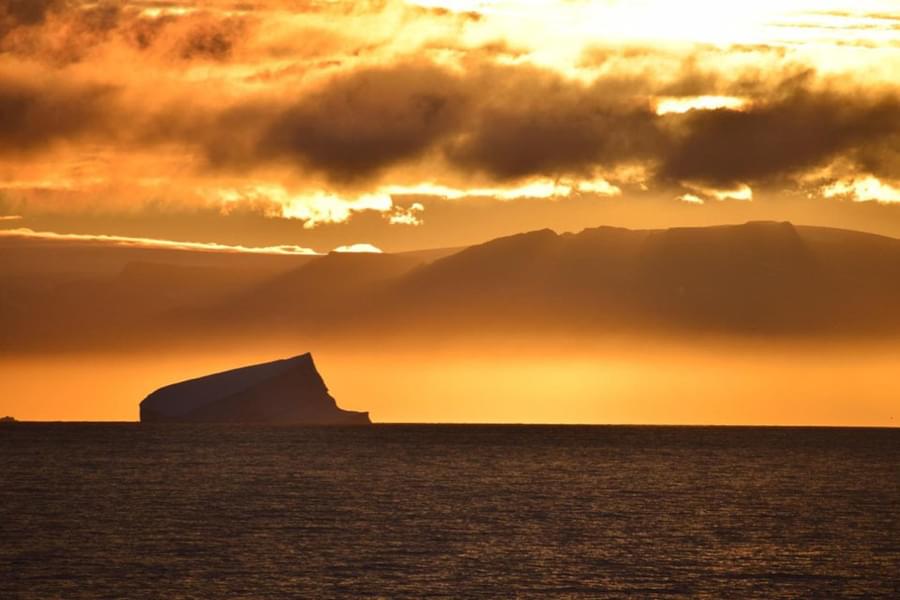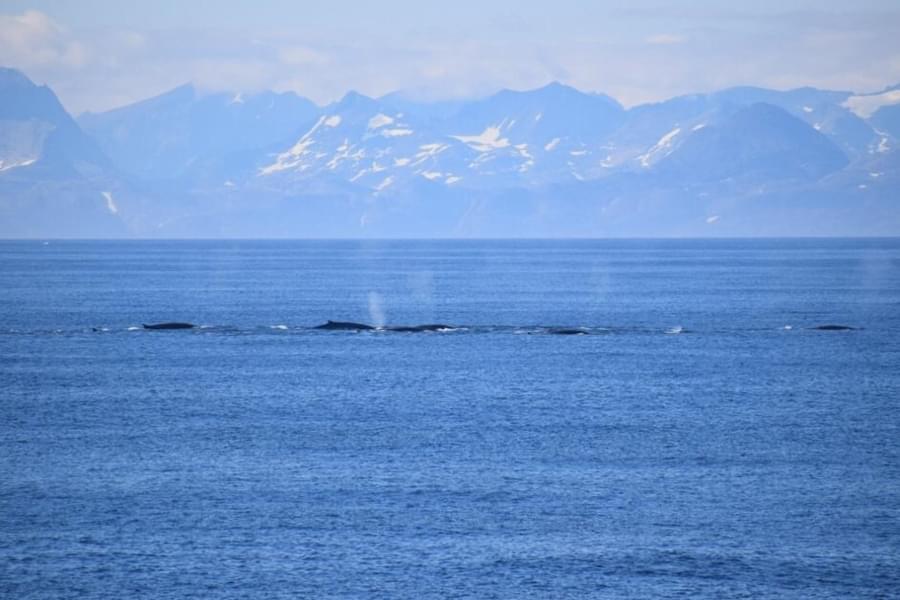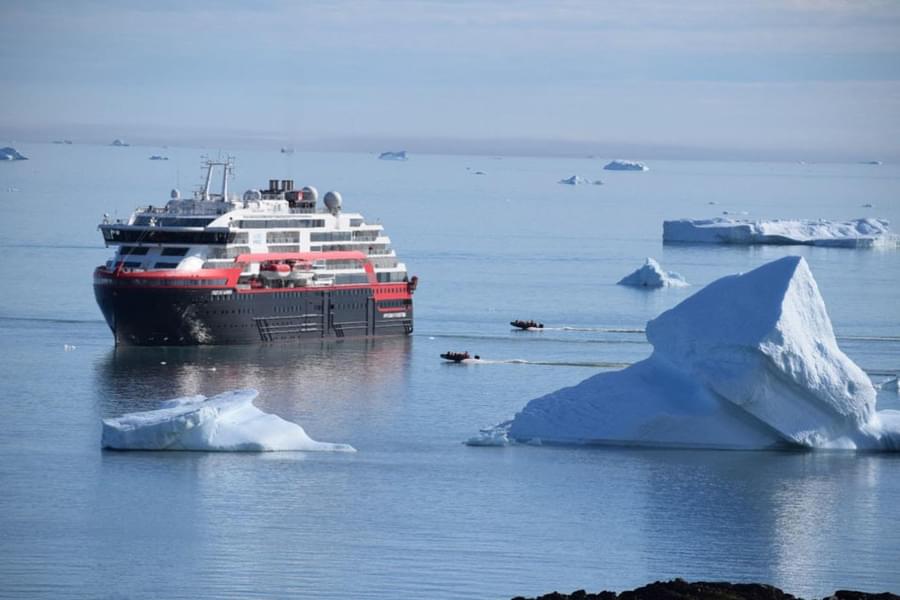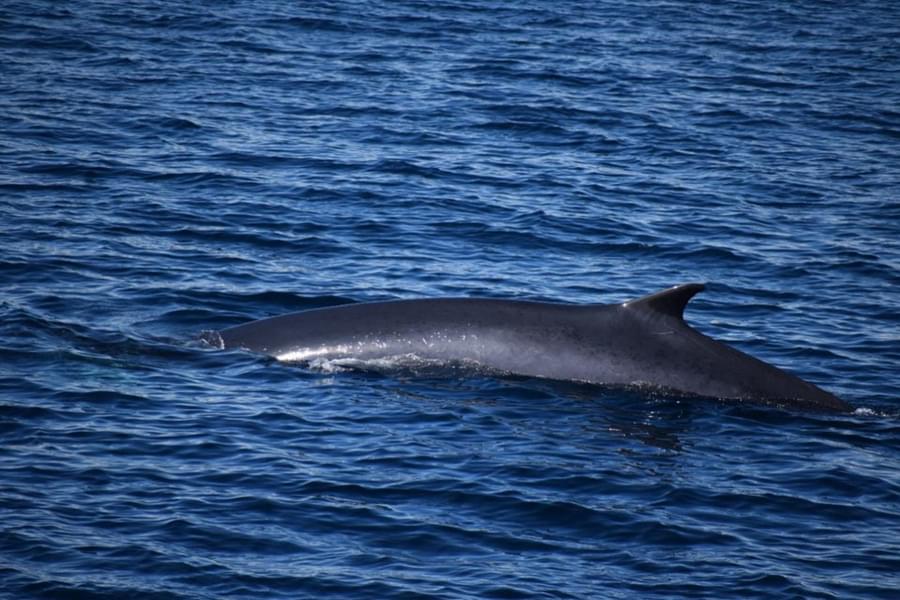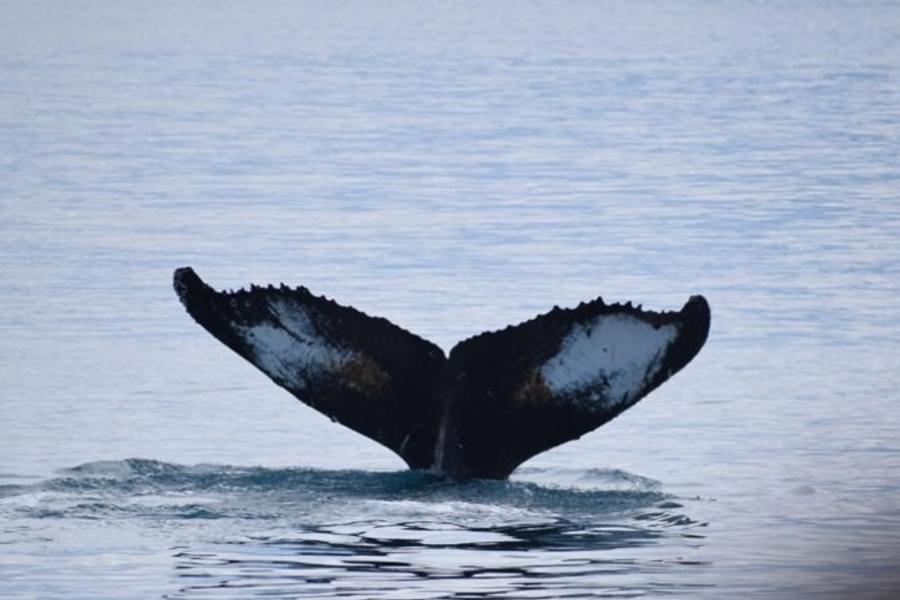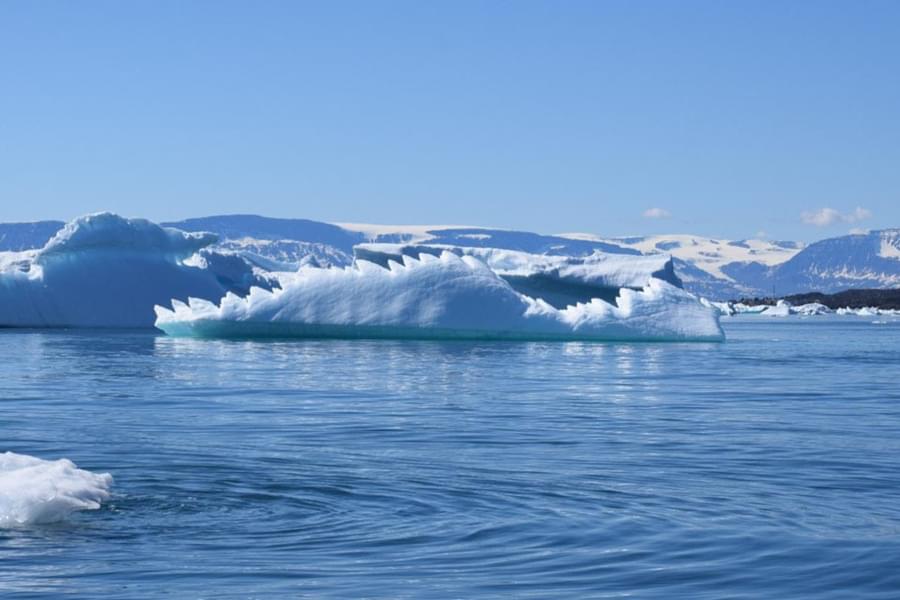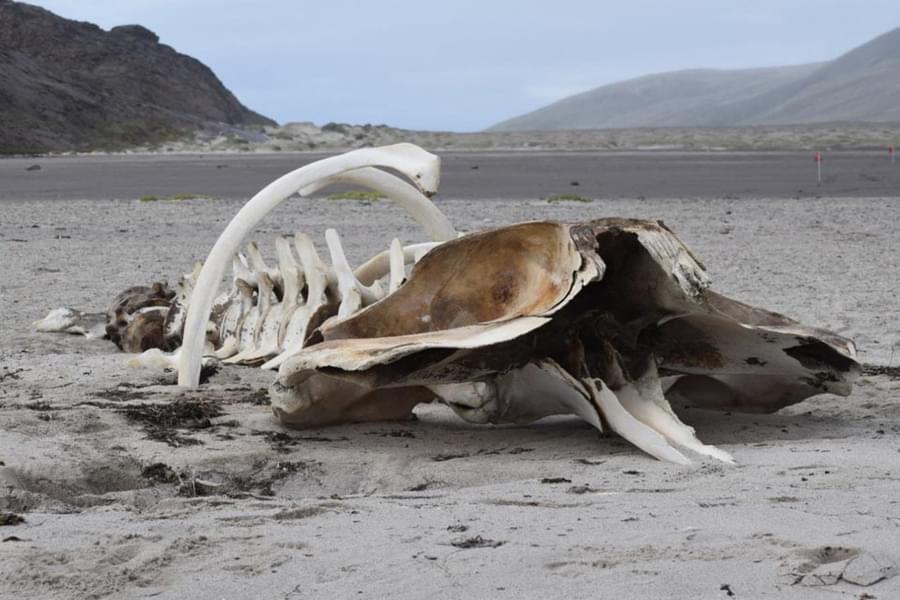When I was asked to join the Hurtigruten Expeditions cruise ship MS Fridtjof Nansen as their ORCA Ocean Conservationist, I jumped at the opportunity, and I’m pleased to say it did not disappoint.
I have now returned from my final voyage from Reykjavik across the Denmark Strait and up west Greenland to Disko Bay. The two months onboard were fantastic.
I recorded sperm whales, fin whales, sei whales, minke whales, humpback whales, bottlenose dolphins, white-beaked dolphins, pilot whales and harbour porpoises during my time onboard. With so many exciting cetacean encounters, it would be hard to pick my favourite moment onboard, so I will bore you with just a few of them.
As we reached the southern tip of Greenland on one voyage, we were greeted by a stunning sight. Hundreds of baleen whales, predominantly fin whales, in pods of twenty-plus were feeding. We passed line after line of blows, and they just didn’t seem to stop coming. As we left one group, another would appear on the horizon. This is a mark of the incredible recovery fin whales have made since commercial whaling was banned in 1986.
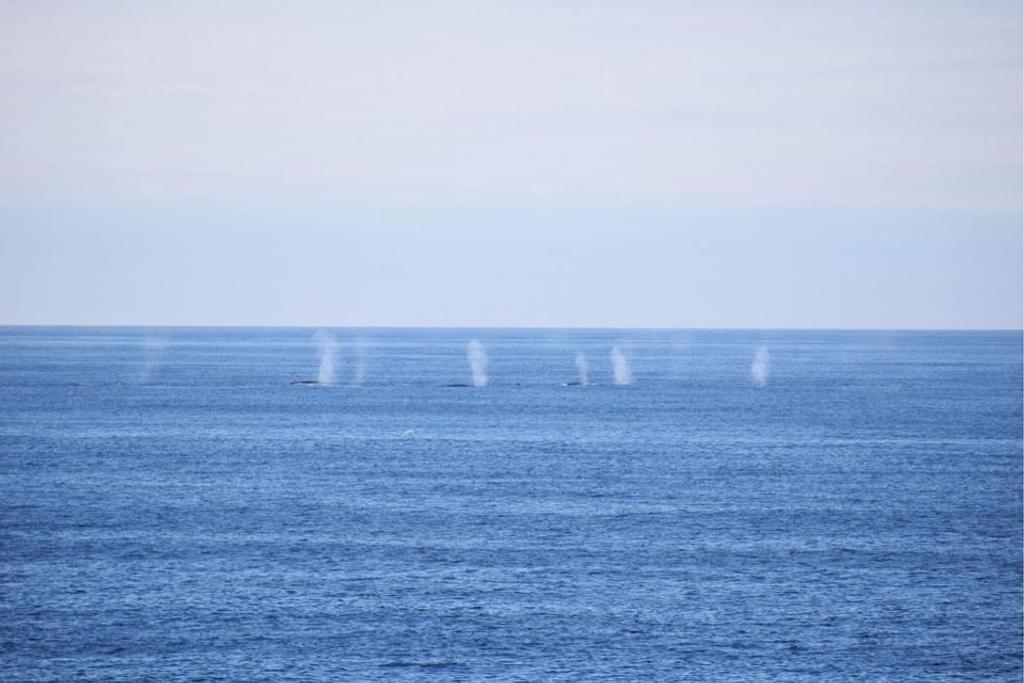
Another spectacular event was in Maniitsoq bay, where a lone humpback whale was breaching throughout the afternoon. The ship was anchored off the town, and we got a perfect view of the animal shooting out of the water, splashing its flukes and slapping its flippers against the water. The humpback whales in west Greenland spend the winter in the warm shallow Caribbean Sea before migrating northwards to enjoy the summer buffet experienced in polar regions.
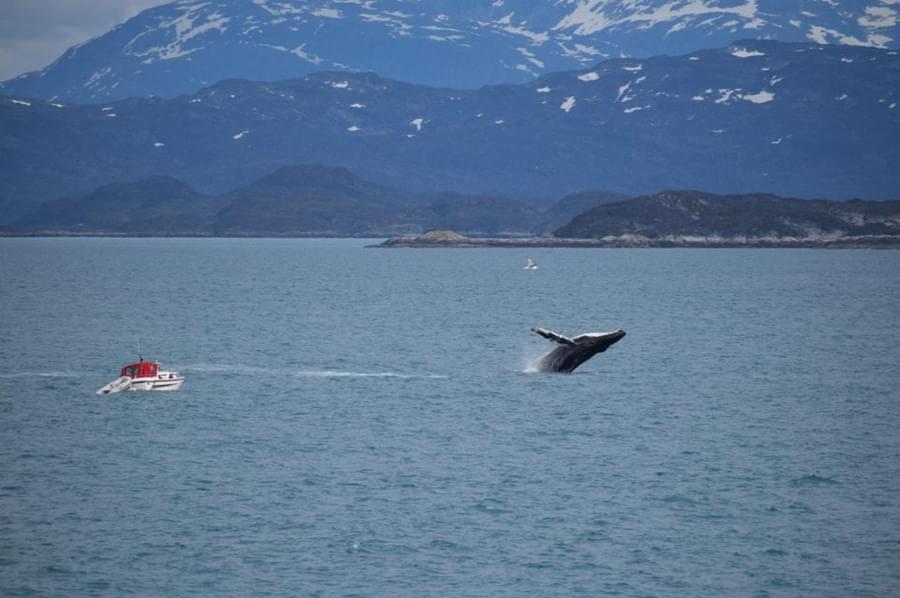
A final cetacean highlight was during a boat trip into the Ilulissat Icefjord. The icefjord releases 20 billion tons of ice into the ocean each year and is fed by Sermeq Kujalleq, the most productive glacier in the northern hemisphere. Ice moves on average 40 metres every day through the glacier. The icebergs in the icefjord stir up nutrients at their base and facilitate a plankton explosion that attracts many humpback whales. We saw at least twelve whales and even got a couple of fluke shots among the ice.
Every humpback whale has a unique flukeprint, similar to our fingerprints, which allows us to identify the individual. Using this information, we can follow a whale’s journey as they are spotted around the world.
Aside from cetaceans, there were magnificent glaciers, beautiful icebergs, picturesque sunsets and a range of Arctic wildlife to be seen.
However, a recurring theme in the country was evidence of whaling. The Inuit of Greenland have a long history of whaling for subsistence. This continues to this day, and there was evidence of it in every port. Harpoon guns, whale jawbone arches, whale meat in markets and jewellery made from whale bone and narwhal ivory. Common questions from guests were ‘How does this make you feel?’, ‘Are they allowed to do that?’ and ‘Can I try some whale meat?’.
It was very sad to see these magnificent creatures butchered and sold in the markets. Commercial whaling nearly wiped-out whales, and many populations have not recovered to this day. The question of whether they are allowed to hunt in Greenland is complicated. The Arctic is a harsh unforgiving environment, and farming prospects are poor. This has contributed to a culture of hunting where muskox, reindeer, seals and whales, as well as fish, are all a source of food. Although commercial whaling is still banned by the International Whaling Commission (IWC), Greenland is allowed to continue hunting to meet the needs of indigenous people under an “Aboriginal Subsistence Whaling (ASW)” exemption. The IWC sets quotas every six years.
The conditions of ASW quotas are that quotas are set to meet longstanding, subsistence, cultural and nutritional needs. The IWC tolerates a degree of commerciality in the use of the whales, including sales in local markets, but the lines between ASW and commercial whaling are blurred in Greenland, with whale meat products being sold and offered to tourists in hotels and restaurants. Conservation NGOs argue that this contradicts the International Whaling Commission’s rules on ASW and suggests that Greenland is catching more whales than it needs to meet the genuine nutritional subsistence needs of indigenous Greenlanders.
Tourism should not sustain commercial whaling in the present day, and I repeat what I told many guests onboard: Whales are sentient beings, shown to have complex social structures and a broad range of emotions. You would not be eating them to meet a cultural or nutritional subsistence need, so I recommend you enjoy watching them out on deck as we sail instead. Whale watching is much better than whale eating.
Whale watching tourism is increasing in Greenland, and some of the sights we saw in Greenland are a testament to the huge global recovery of some species such as the humpback whale and the fin whale. I look forward to returning to Greenland in the future and seeing the incredible sight of hundreds of whales enjoying the summer food bonanza again.
